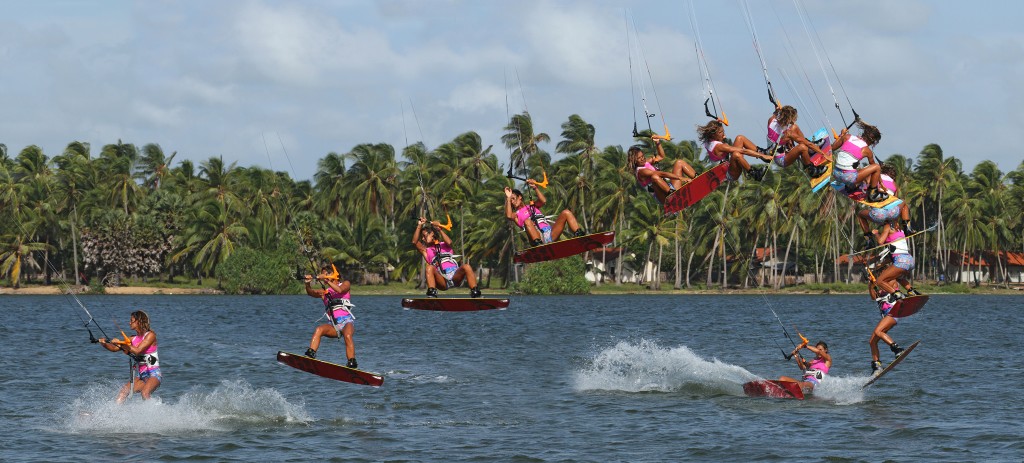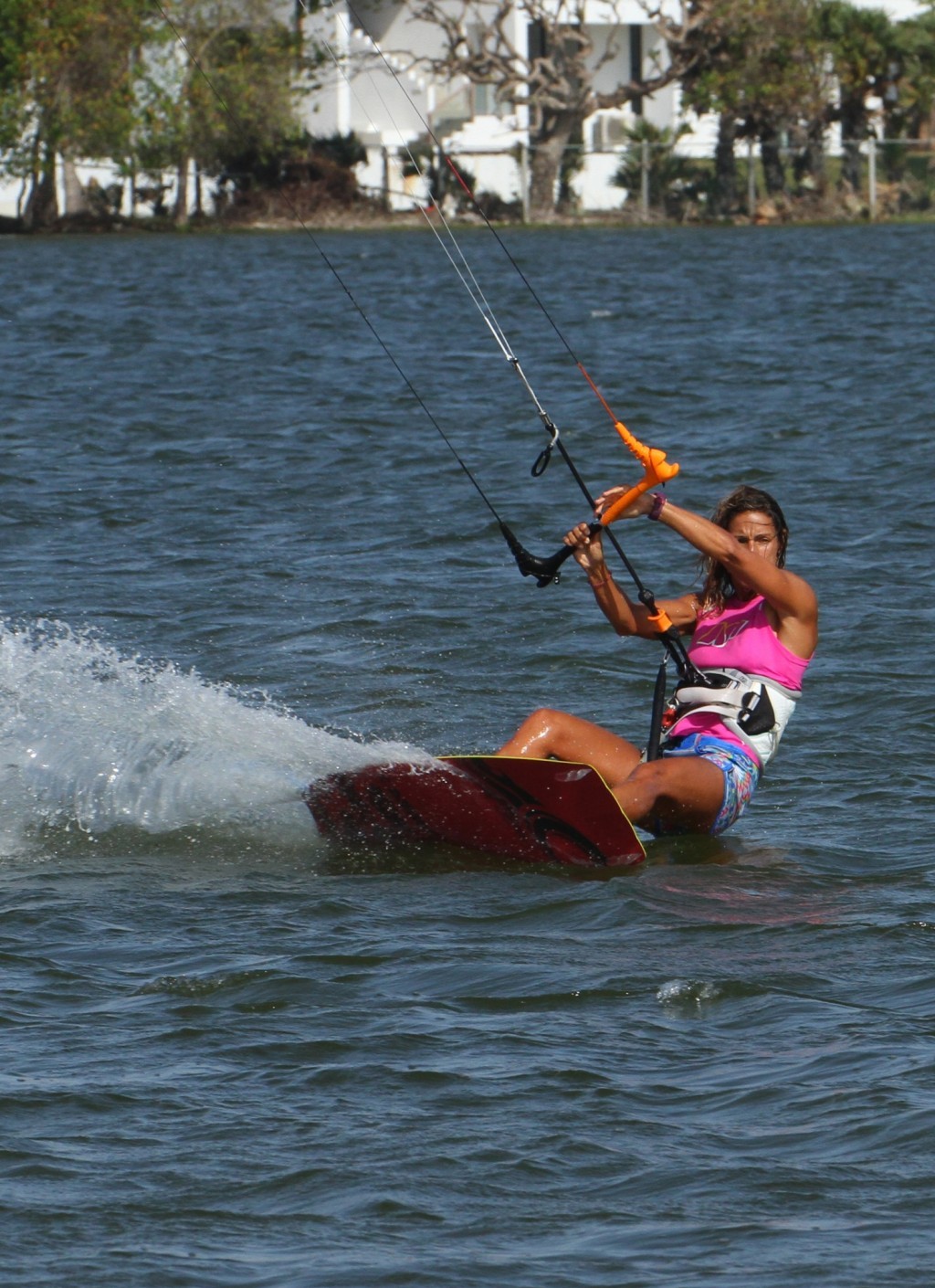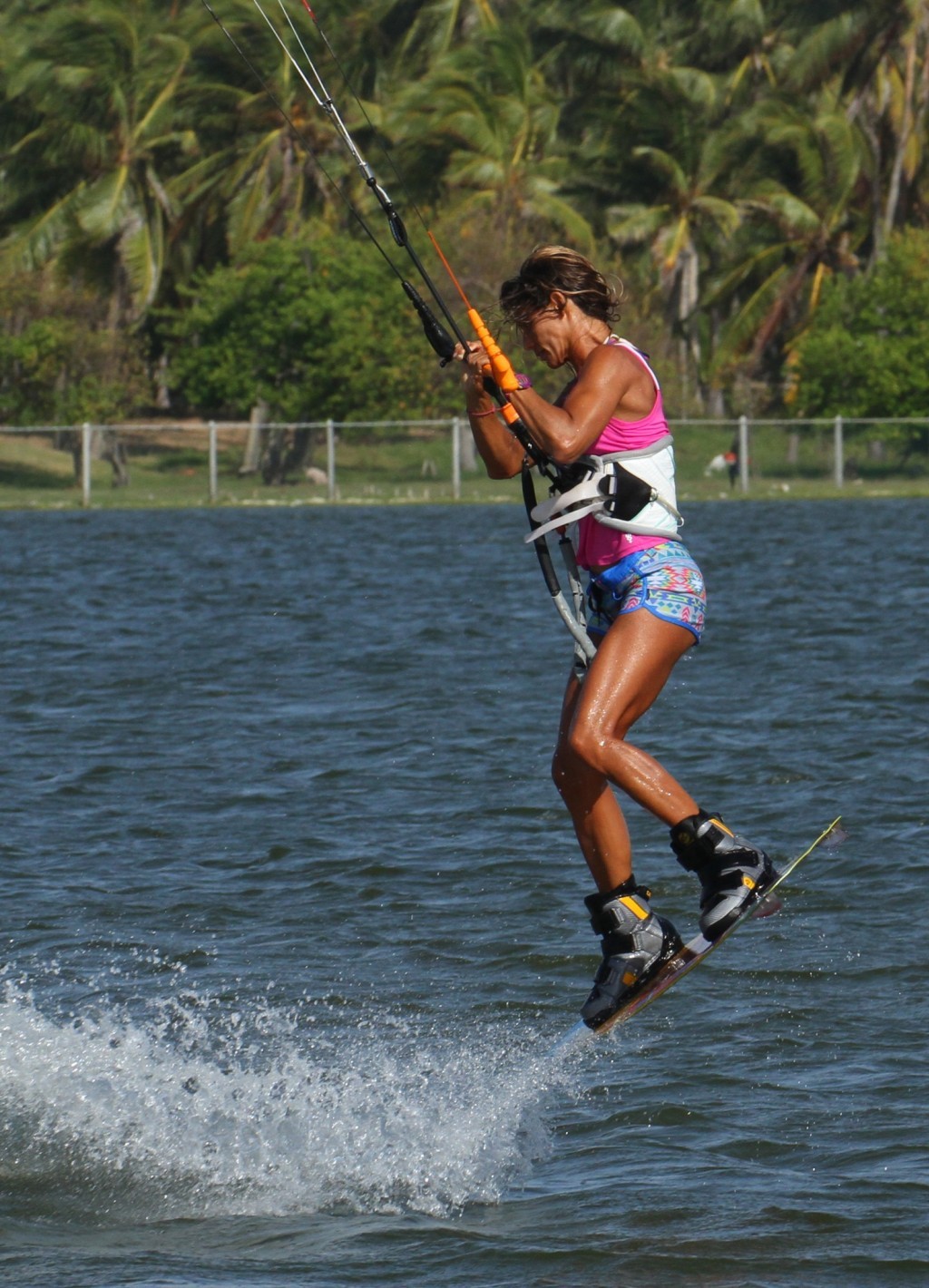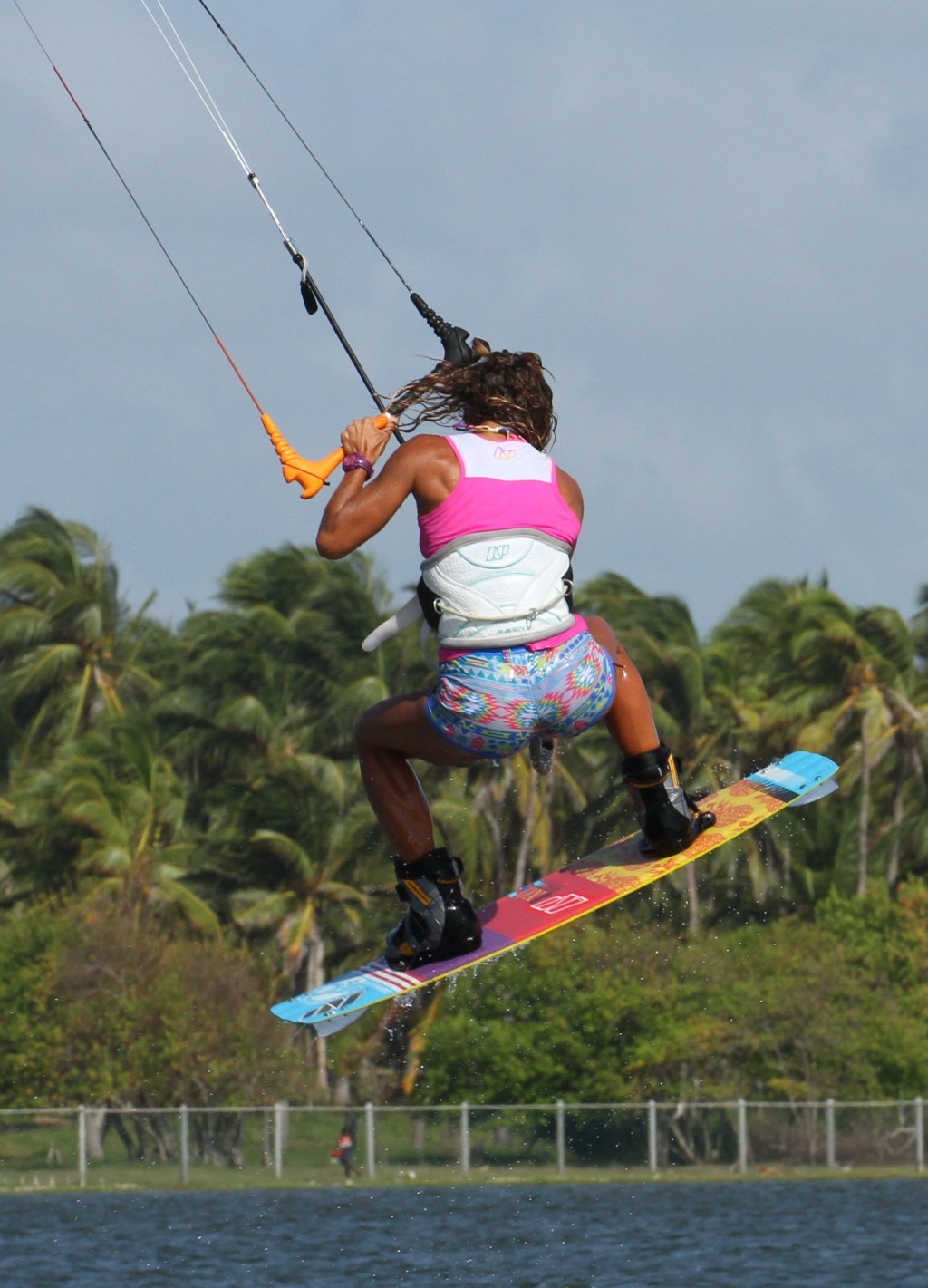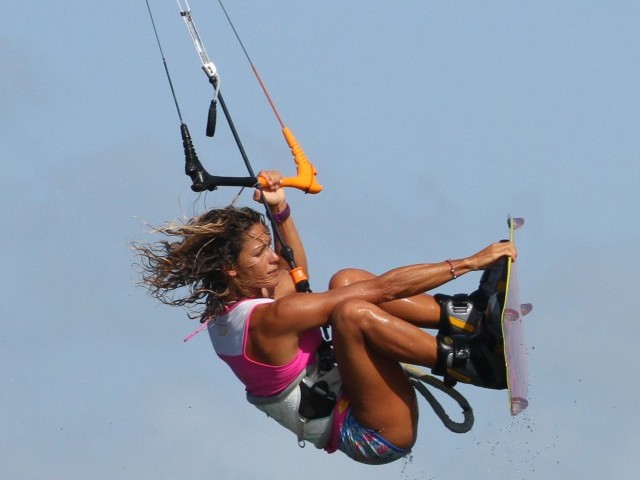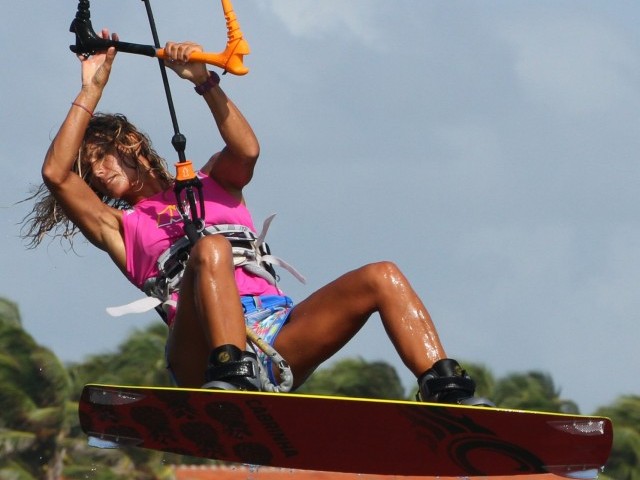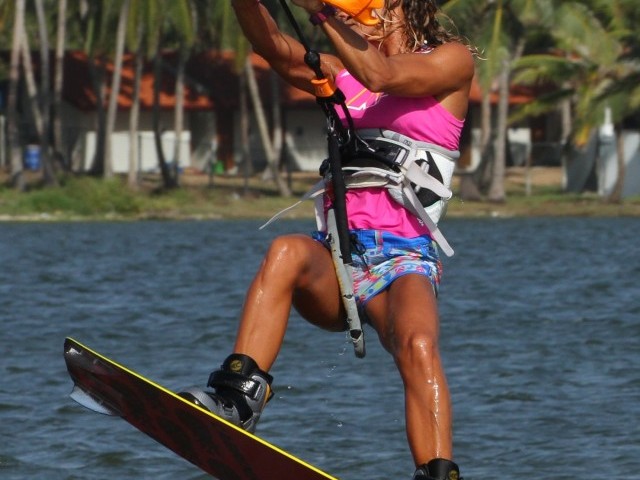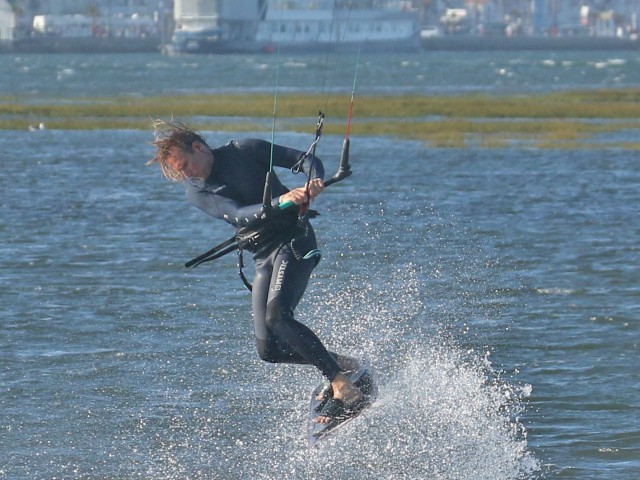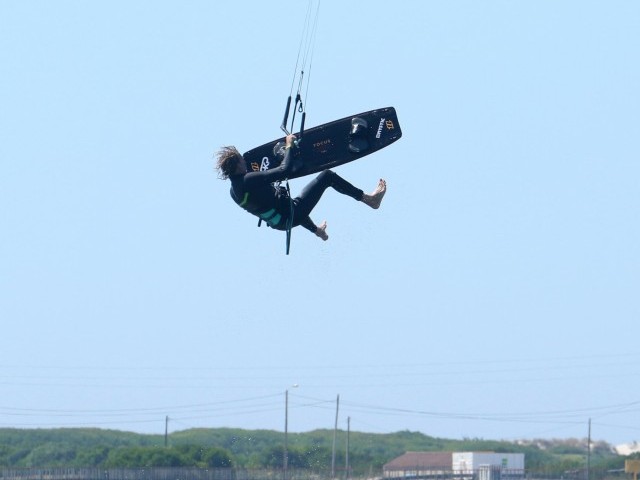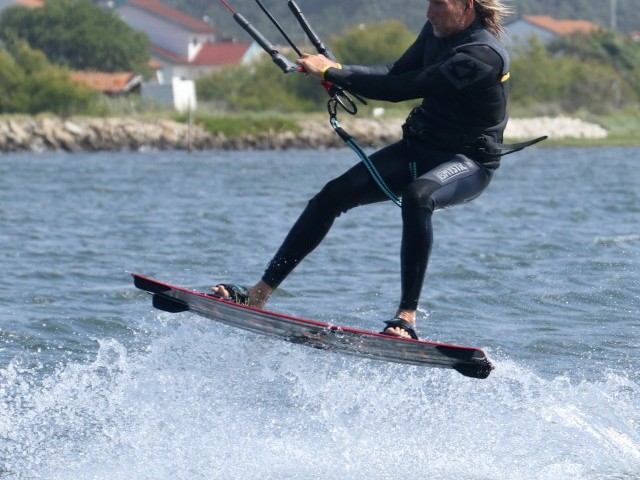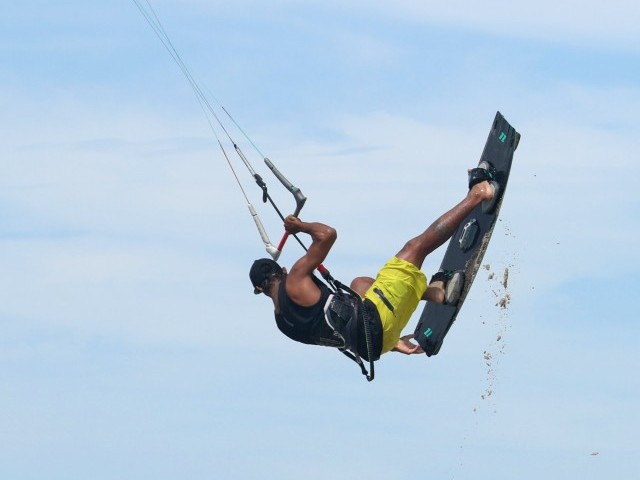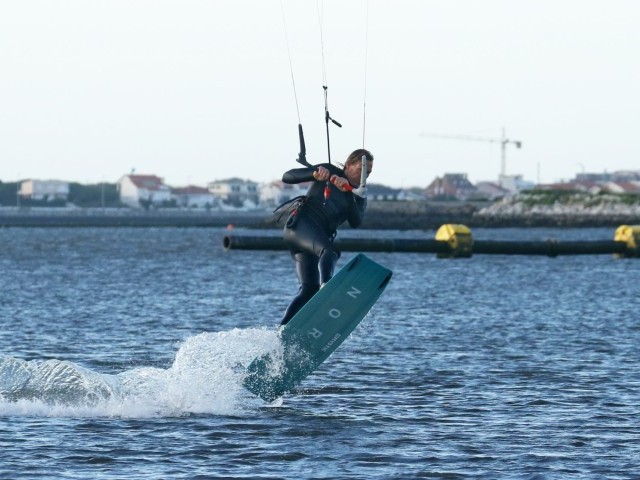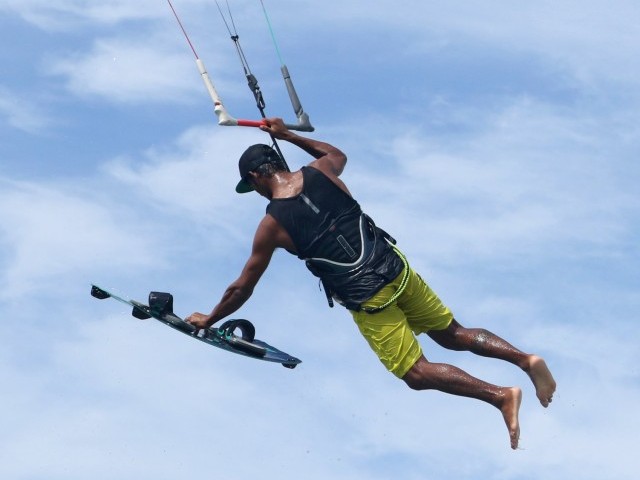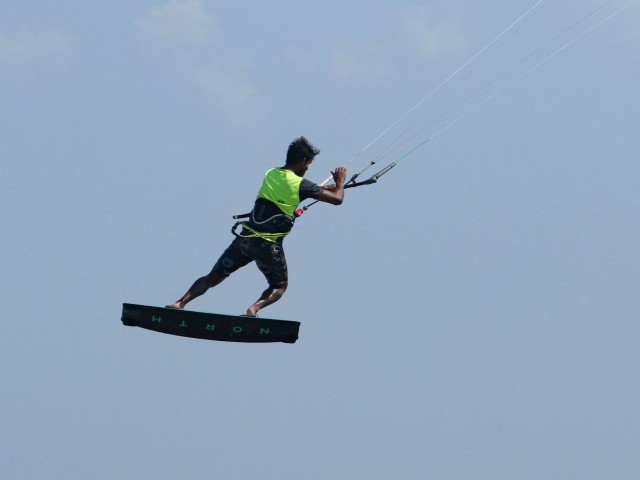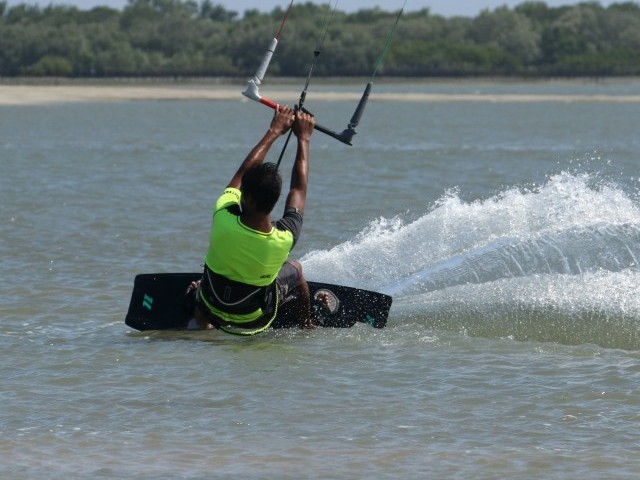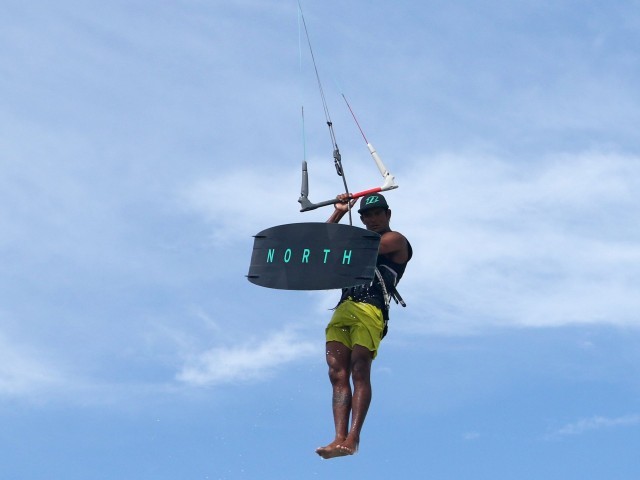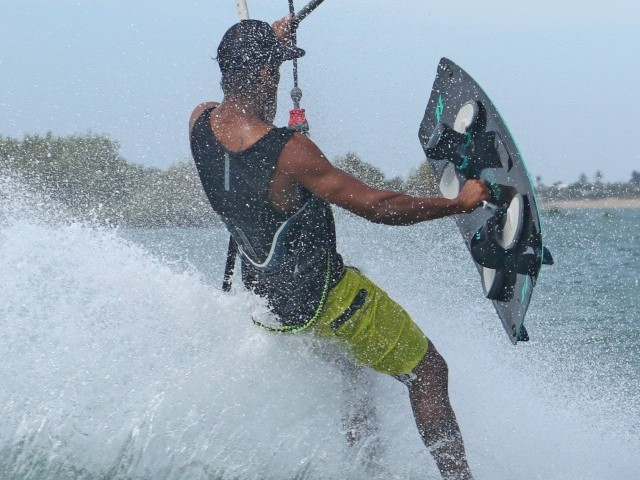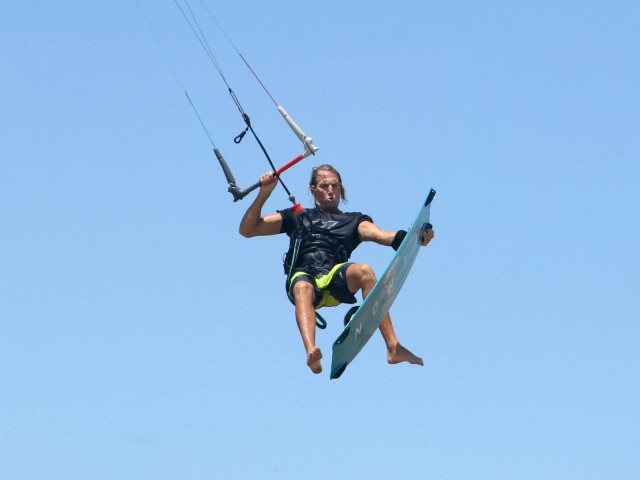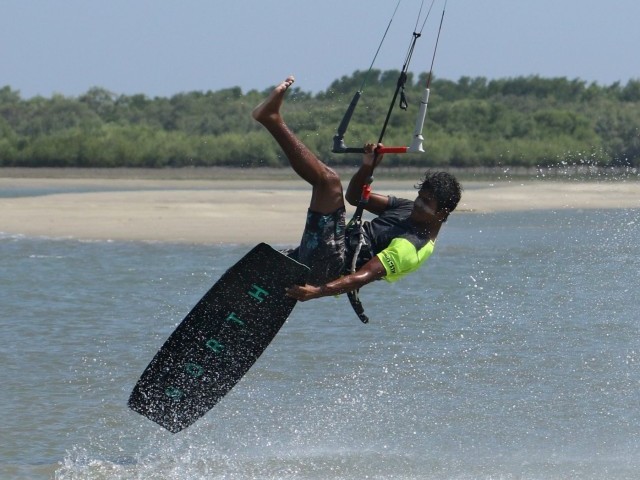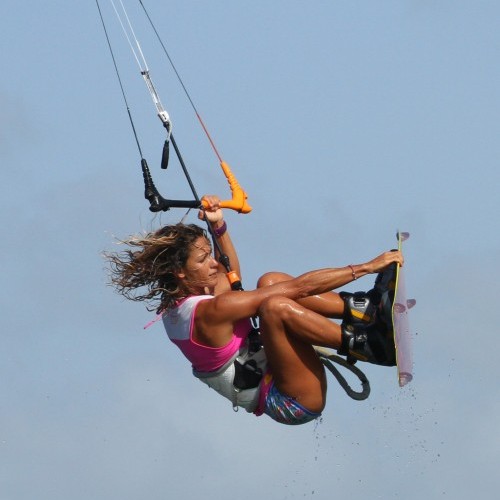
Indy Front Down Loop Transition
Technique / Advanced
Introduction
We’ve always been massive fans of transitions. There’s something hugely rewarding in making the simple act of changing direction into something more personal, different, showy, challenging and downright groovy. Who didn’t want to BLT as soon as a back loop was possible and who doesn’t love that moment of hang and weightlessness of an air gybe. So to continue the flow of all things that take us back the other way, here’s the scrummy front loop down loop with Indy grab transition.
As is our fashion, let us start with a brief (or not so) look at the key moments that’ll make this both more achievable and potentially less painful.
Pic A Approach and Take Off
First things first, as this is a transition you do need to knock some speed off so that you can land going back the other way, regardless of the down loop, so edge hard upwind as Karine is here, to slow down a touch. Along the same lines, you want a fairly up and down jump so that you feel controlled and confident, an elevator jump as it were, so you’ll still want to start with the kite around either 1 or 11 o’clock and give it a proper send to give you that lift. As you will be down looping, you can send the kite further back than you would for a normal transition. Hands want to be centred on the bar so that you’ll be happy with your back hand off and of course you’ll need a tad more space than usual, as the down loop will pull you downwind. That’s the pre-flight check list sorted then!
Pic B Your Front Rotation
This part should be fairly straight forward as you’ll be kicking off your back foot, turning your head and lifting your front knee – just like a front loop, or roll. However it’s not uncommon to throw oneself across the board into a front rotation, which will still work, but it will also mean that you’ll travel downwind and under the kite more, which could lead to an unresponsive kite come the down loop. Make sure you kick yourself away from the board’s edge, don’t flatten it and throw yourself over. You can see that Karine is going up, sounds obvious but it’s because she kicked herself upwind and away from the board. Her front knee is lifting, which is her axis of rotation, and she’s already redirecting the kite towards 12 o’clock with the bar in on the sweet spot. Firstly because she gave it a good send and secondly because she needs the kite moving forward in preparation for the down loop. If she leaves the kite behind her, she’ll have no pull when she down loops and thus will drop and stop, and if she lets the bar out the result will be much the same!
Pic C Preparation Time
Due to what’s coming, you’d prefer to get your grab in early. The timing of your down loop means that you can’t get too far around the rotation, and you can’t be grabbing late. So as soon as you’re up and off, you need to get things moving towards the grab. For the Indy, you’ll be grabbing the toe side edge between your feet, so you need to bring both knees up together to get that part of the board near enough to grab. It’s very tempting to pull the back leg up, but then you’ll be more likely to grab by your back foot which in fact be a tindy, no problem, but purists won’t be happy. In the pic, you can see that Karine is still steering the kite forward with the bar in, as she actually wants the kite to fly just past 12 o’clock before she down loops it, and she’s looking at where she wants to grab the board as she reaches down for it.
Pic D The Indy
With her knees right up Karine has plenty of room to reach between them down to the middle of the board. The wonderful thing about adding this grab to a front rotation is that due to the way you rotate, slightly off axis, the board comes up and round, which makes it look all the better. Karine is also looking at her grab, and not over her shoulder, which helps control the speed of her rotation, as it almost stalls her. This way she and you can hold the grab, feel where the kite is, hopefully just past 12, and move forward with it. At this point, you should be about half way round, and you should feel the kite pulling you slightly forwards. In a normal front, this would mean that you’ve redirected the kite too much and will struggle to land without letting the bar out and coming down heavy on the front foot. Here, however, it’s perfect as you’re now ready for the exciting bit!
Pic E The Down Loop
Timing is everything, but the preparation is even more important. Thinking back, we’ve been progressively steering the kite forward, so to finally get the kite down looping you just need to give it that bit extra. The aim was not to park the kite and then pull the trigger, as this is a flowing move. As Karine rotates to almost ¾ of the way round, so that her (original) back foot, the right one, is nearly pointing downwind, she gives the bar that bit more and releases the grab. Her kite will hopefully start its new journey from 11:30 or even 11 as she is jumping to the left. As the kite is down looping and you’re moving forwards with it, the pull will not be as violent as a kite loop. Hopefully, it’ll be no more than an aggressive dive to land, but just taking you back the other way. As with all things loop, though, make sure you don’t allow the bar to pull out as the power comes on as this will slow the kite down and increase it’s turning circle, all of which equals more power and more potential to get it wrong.
Pic F Coming Down
This is the reason you want the kite movement to be progressive. Karine has got a lovely pull from the kite; it pulls her downwind and ever so slightly back in the other direction. It’s actually turned down in the left side of the window and then goes through and back up on the right side. If the kite is too far back, it’ll all happen on the right side, and there’ll be no pull. The same applies if you just yank it like an emergency brake, the kite will whip round and won’t pull you or set you down gently. As the kite pulls, Karine turns to look downwind, but back the other way; she’ll land tail first and then carve up onto her heel side edge. You can see that although she is still committed to the down loop with her bar, it’s nowhere near as extreme as the movement required for a kite loop. The final beauty is that not only did you just complete a front down loop transition with an Indy grab, but you won’t have to unspin your bar either:)
Top Tips
Assuming that you’re already front looping and down looping, adding the Indy shouldn’t pose too many problems, however by going for the grab you’re adding another ingredient to the mix so you may well forget something, which is usually the kite. However, by taking one hand off the bar, as long as you keep the bar in, you’re more likely to drift the kite forward and as a result will be rewarded with a stunningly smooth down loop transition.
Now mosey on through the sequence and the videos to get a taste for the action in real world time.
Common Problems
Not reaching the grab. Generally, it’s nothing to do with flexibility, but you need to help yourself by bringing both knees up simultaneously. The most common reason for missing the grab is not looking where you’ll grab it; it’s pretty difficult to do it blind.
Landing with no power. As lauded to earlier this is the most common problem with any down loop transition and will be more noticeable the smaller the kite that you’re using. If you down loop the kite from behind 12 o’clock, the kite will just whip around behind you, and therefore it won’t physically pull you out of the move. Before cranking the kite around you have to get it across the window to either 1 or 11 depending on your direction of travel. Do this and then you can down loop the kite through the window, generating power and pulling you out downwind.
Keystones
- Good send for height
- Kick yourself upwind
- Both knees up
- Steer kite forward over your head
- Progressive down-loop to pull you downwind for landing
This technique article was in Issue 58 of IKSURFMAG.
Related
By Christian and Karine
Christian and Karine have been working together as a coaching team, running improver to advanced kitesurfing clinics since 2003.






